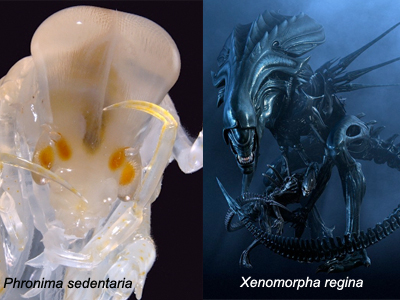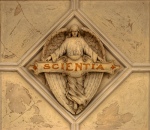Quick blurbs about arthropod research and news:
- NASA climate researchers have discovered animal life deep below the Pine Island Glacier Ice Shelf in Antarctica. The researchers drilled a hole six-hundred feet deep and eight inches wide into the glacial ice sheet about twelve miles from the open ocean. When they lowered a camera below the ice sheet, the scientists were surprised to see a Lyssianasid amphipod crustacean swim up and park on the cable. The researchers were only expecting to find microbial life under the ice sheet this far in from the open ocean. It is unknown what the primary energy source for animals living here could be. The presence of a three-inch amphipod, however, suggests a much more elaborate and dynamic ecosystem than hypothesized in this poorly understood habitat. (DSN has a video of the amphipod)
- Limnoriid isopods, commonly called gribble worms for some reason (they neither are, nor resemble worms), have a ravenous appetite for wood. This is not unusual among arthropods; many diverse groups including termites, millipedes, and squat lobsters are capable of digesting woody plant matter. However, all these creatures process the wood with the aid of gut-dwelling symbiotic bacteria. A new study finds that the Limnoriid isopod, Limnoria quadripunctata is special in that it doesn’t rely on bacteria-produced catalysts to break down wood, but rather has the necessary glycosyl hydrolase enzymes incorporated into its genome. These enzymes are evolutionarily related to similar proteins found in arthropods, but their derived function for wood digestion in Limnoriid isopods is completely novel. The researchers, or their over-excitable university PR department, think the study of these enzymes could aid in bio fuel synthesis.
- The gemone of the pea aphid, Acyrthosiphon pisum, has been sequenced. This is the first Hemipteran (true bug) genome and will provide clues about the evolutionary history of certain hexapod groups. This new genome could also help agriculturalists develop new techniques to control aphid pests and the spread of aphid-borne plant viruses. Researchers are also interested in the pea aphid’s, apparently, scaled down immune response system and their ability to easily switch specialization from one plant species to another.


















